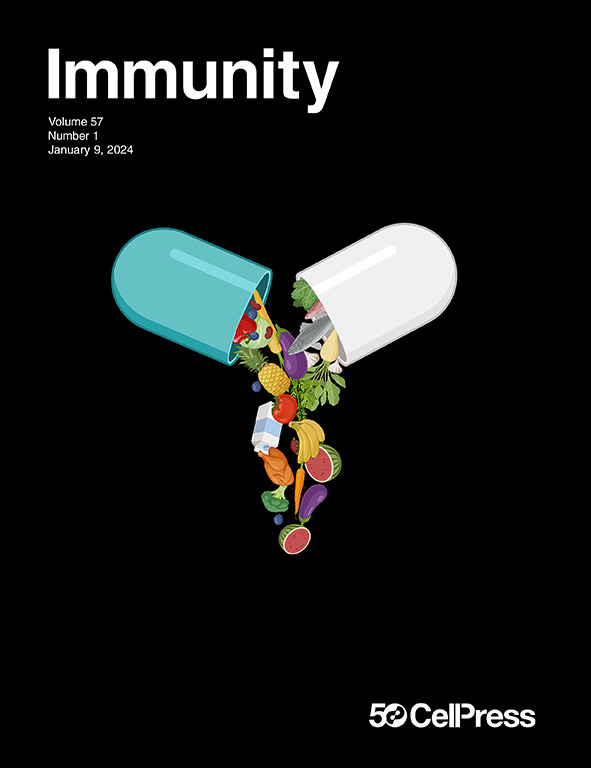衰老肿瘤细胞释放的线粒体DNA通过cGAS-STING途径增强pmn - mdsc驱动的免疫抑制
IF 25.5
1区 医学
Q1 IMMUNOLOGY
引用次数: 0
摘要
线粒体功能障碍是细胞衰老的标志。在这里,我们研究了衰老细胞是否向细胞外释放线粒体(mt)DNA及其对先天性免疫的影响。我们发现,原代衰老细胞和接受治疗诱导衰老的肿瘤细胞都会主动向细胞外环境释放mtDNA。衰老细胞释放的mtDNA被包裹在细胞外囊泡中,并选择性地转移到肿瘤微环境中的多形核髓源性抑制细胞(PMN-MDSCs)中。细胞外的mtDNA被吸收后,会通过cGAS-STING-NF-κB信号增强PMN-MDSCs的免疫抑制活性,从而促进肿瘤进展。STING 激活可直接诱导 NF-κB 信号转导,同时还能激活 PKR 样内质网激酶(PERK),从而进一步增强 PMN-MDSCs 的 NF-κB 活性。这些研究结果表明,针对mtDNA的释放可以重新规划免疫抑制性肿瘤微环境,改善化疗患者的治疗效果。本文章由计算机程序翻译,如有差异,请以英文原文为准。

Mitochondrial DNA released by senescent tumor cells enhances PMN-MDSC-driven immunosuppression through the cGAS-STING pathway
Mitochondrial dysfunction is a hallmark of cellular senescence. Here, we investigated whether senescent cells release mitochondrial (mt)DNA into the extracellular space and its impact on innate immunity. We found that both primary senescent cells and tumor cells undergoing therapy-induced senescence actively released mtDNA into the extracellular environment. mtDNA released by senescent cells was packaged within extracellular vesicles and selectively transferred to polymorphonuclear myeloid-derived suppressor cells (PMN-MDSCs) in the tumor microenvironment. Upon uptake, extracellular mtDNA enhanced the immunosuppressive activity of PMN-MDSCs via cGAS-STING-NF-κB signaling, thereby promoting tumor progression. While STING activation directly induced NF-κB signaling, it also activated PKR-like endoplasmic reticulum kinase (PERK), which further amplified NF-κB activity, in PMN-MDSCs. mtDNA release from senescent cells was mediated by voltage-dependent anion channels (VDACs), and pharmacological inhibition of VDAC reduced extracellular mtDNA levels, reversed PMN-MDSC-driven immunosuppression, and enhanced chemotherapy efficacy in prostate cancer mouse models. These findings suggest that targeting mtDNA release could reprogram the immunosuppressive tumor microenvironment, improving therapeutic outcomes for chemotherapy-treated patients.
求助全文
通过发布文献求助,成功后即可免费获取论文全文。
去求助
来源期刊

Immunity
医学-免疫学
CiteScore
49.40
自引率
2.20%
发文量
205
审稿时长
6 months
期刊介绍:
Immunity is a publication that focuses on publishing significant advancements in research related to immunology. We encourage the submission of studies that offer groundbreaking immunological discoveries, whether at the molecular, cellular, or whole organism level. Topics of interest encompass a wide range, such as cancer, infectious diseases, neuroimmunology, autoimmune diseases, allergies, mucosal immunity, metabolic diseases, and homeostasis.
 求助内容:
求助内容: 应助结果提醒方式:
应助结果提醒方式:


